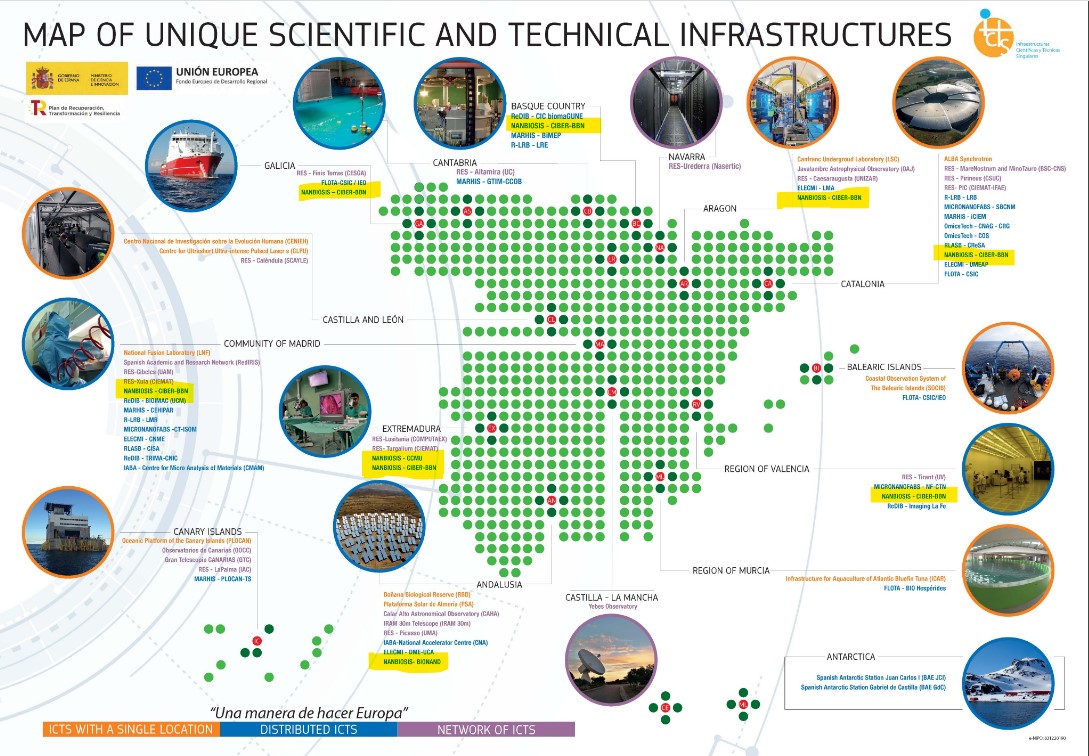
ICTS underpins the Spanish reputation for research excellence.
In the picture: the new poster of the ICTS map in which NANBIOSIS facilities have been highlighed
The term Unique Scientific and Technical Infrastructure (ICTS) refers to facilities, resources, or services for the development of top-quality cutting-edge research, as well as the communication, exchange, and preservation of knowledge, the transfer of technology, and promotion of innovation. They are unique or exceptional in their fields, with a high cost of investment, maintenance, and operation, and are of a strategic importance that justifies their availability to all actors in the field of R&D&I. The ICTS share three fundamental characteristics; they are infrastructures with public ownership, unique and open to competitive access.
ICTS offer an opening capacity percentage of their essential services under ‘Competitive Open Access’ for the use by national and international public and private sector researchers, with the support of technical and administrative personnel of the ICTS. Infrastructures access is ruled by a public “Access Protocol” that describes the procedure and criteria for access to the infrastructure. The main features of ‘Competitive Open Access’ are that R + D + i quality of activities developed at the infrastructure should be proven and that requests for access should be prioritized on the basis of objective criteria.
The dissemination of ICTS and their capabilities is essential to provide Spanish and international researchers with access to a large base of quality services and facilities, a basic requirement for the development of excellent science.
The new posster pushised by the General Subdirectorate of Large
Scientific-Technical Facilities of the of the Sapanish Ministry of Science and Research Innovation helps to disseminate and understand the map of ICTS wich are located throughout the country
NANBIOSIS, is one of the five ICTS in the field of Health Sciences and Biotecnology








